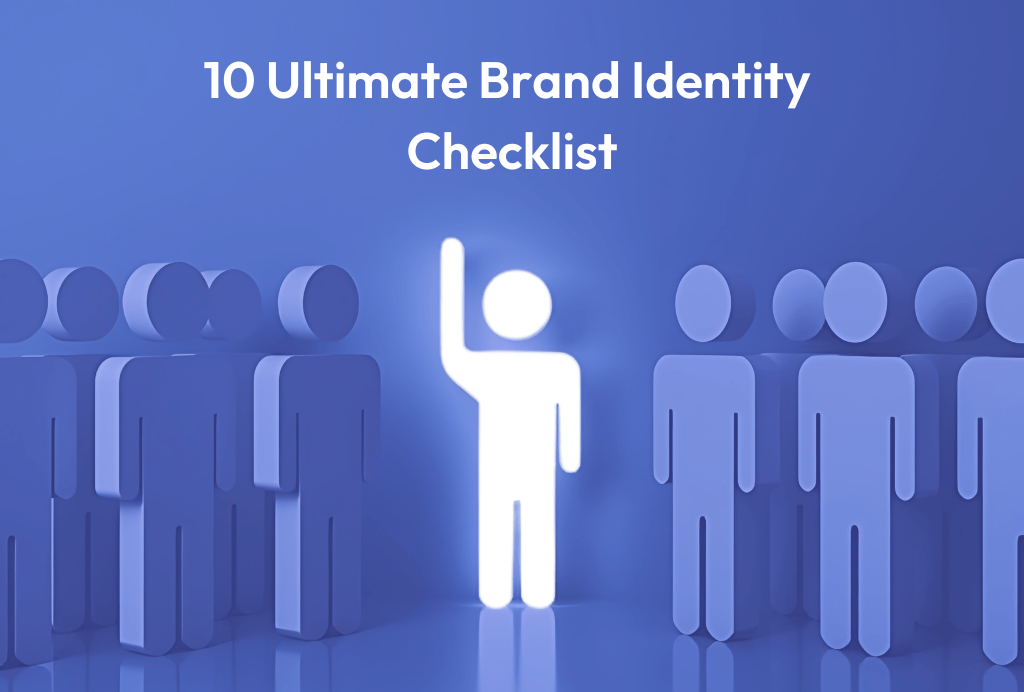10 Ultimate Brand Identity Checklist to Build a Memorable Brand Presence
Discover the essential steps to create a strong brand identity checklist. From logo design to brand messaging, ensure every aspect of your brand reflects your values and resonates with your audience.
What is brand identity checklist?
A brand identity checklist is a comprehensive tool used by businesses to ensure that all aspects of their brand identity are consistent, cohesive, and effectively communicated to their target audience. It serves as a guide to assess and refine various elements that contribute to a brand’s identity and perception. Here’s a breakdown of what a typical brand identity checklist might include:
Brand Strategy:
- Mission, vision, and values: Are they clearly defined and aligned with the company’s objectives?
- Unique selling propositions (USPs): What sets the brand apart from competitors?
- Target audience: Have buyer personas been created to understand the demographic, psychographic, and behavioral characteristics of the target audience?
Visual Identity:
- Logo: Is the logo visually appealing, memorable, and reflective of the brand’s personality?
- Color palette: Are brand colors consistent across all materials, and do they evoke the desired emotions?
- Typography: Is the typography cohesive and legible across different mediums?
- Imagery: Do images and graphics align with the brand’s tone and messaging?
Brand Messaging:
- Brand voice and tone: Is the brand’s communication style consistent and appropriate for the target audience?
- Key messaging: Are core brand messages clear, concise, and consistent across all channels?
- Brand story: Does the brand have a compelling narrative that resonates with customers and differentiates it from competitors?
Brand Assets:
- Website: Is the website design consistent with the brand’s visual identity and user-friendly?
- Marketing materials: Are brochures, flyers, and other promotional materials consistent with brand guidelines?
- Packaging: Does product packaging reflect the brand’s identity and values?
Brand Experience:
- Customer touchpoints: Are interactions with the brand consistent across all channels, including social media, customer service, and physical locations?
- User experience: Is the overall experience of engaging with the brand positive and seamless?
- Brand perception: How is the brand perceived by customers, and does it align with the desired brand image?
Brand Management:
- Brand guidelines: Are comprehensive brand guidelines in place to ensure consistency in branding efforts?
- Monitoring and feedback: Is the brand regularly monitored for feedback, reviews, and mentions on social media and other platforms?
- Brand audits: Are periodic audits conducted to assess the effectiveness of branding efforts and identify areas for improvement?
When to use brand identity checklist?
A branding checklist can be used at various stages of a business’s lifecycle and in different scenarios to ensure consistency and effectiveness in brand management. Here are some instances when it’s beneficial to use a branding checklist:
Brand Development:
When establishing a new brand or rebranding an existing one, a branding checklist can serve as a roadmap to define the brand’s identity, values, visual elements, and messaging. It helps ensure that all aspects of the brand are carefully considered and aligned with the company’s objectives and target audience.
- Marketing Campaigns: Before launching a marketing campaign, whether it’s a digital advertising campaign, social media campaign, or product launch, a branding checklist can ensure that the campaign materials and messaging are consistent with the overall brand identity. It helps maintain brand integrity and reinforces brand recognition among consumers.
- Website Design and Development: During the design and development of a website, a branding checklist can guide designers and developers to incorporate consistent branding elements, such as logo placement, color schemes, typography, and brand messaging. It ensures that the website accurately reflects the brand’s identity and provides a cohesive user experience.
- Content Creation: When creating content for various marketing channels, including blog posts, social media posts, email newsletters, and video content, a branding checklist can help maintain consistency in tone, voice, and messaging. It ensures that all content aligns with the brand’s personality and values, reinforcing brand authenticity and relevance.
- Customer Touchpoints: Across different customer touchpoints, such as customer service interactions, product packaging, and physical storefronts, a branding checklist can ensure consistency in brand representation. It helps create a seamless and memorable brand experience for customers, fostering brand loyalty and advocacy.
- Brand Audits and Reviews: Periodically reviewing and auditing the brand’s performance and perception is essential for ongoing brand management. A branding checklist can be used to assess various brand elements, identify strengths and weaknesses, and make informed decisions to optimize the brand’s effectiveness in the marketplace.
- Partnerships and Collaborations: When entering into partnerships or collaborations with other businesses or influencers, a branding checklist can ensure that the brand’s identity is maintained and represented accurately. It helps safeguard brand reputation and ensures that collaborative efforts align with the brand’s values and objectives.
What to Include in Brand Identity Checklist?
- Define Your Brand Strategy: Start by clearly defining your brand’s mission, vision, values, and unique selling propositions. Understand your target audience, their needs, preferences, and pain points to tailor your brand identity accordingly.
- Create a Distinctive Logo: Your logo is the visual centerpiece of your brand identity. Design a logo that is simple, memorable, and reflective of your brand’s personality and values. Ensure scalability and versatility across different platforms and mediums.
- Choose Your Brand Colors: Select a color palette that evokes the desired emotions and associations for your brand. Consider the psychological effects of colors and their impact on brand perception. Maintain consistency in color usage across all brand assets.
- Design Your Visual Brand Elements: Develop visual elements such as typography, imagery, and graphic elements that complement your logo and color palette. Create brand guidelines to ensure consistency in visual branding across all marketing materials and touchpoints.
- Craft Your Brand Messaging: Define your brand voice and tone to communicate consistently with your audience across various channels. Develop key messaging pillars and brand narratives that convey your brand’s story, values, and unique selling propositions.
- Ensure Brand Consistency: Consistency is key to building brand recognition and trust. Review all brand assets, including website, social media profiles, marketing collateral, and packaging, to ensure alignment with your brand identity guidelines.
- Identify Your Target Audience: Understand your target audience’s demographics, psychographics, behaviors, and preferences. Tailor your brand identity to resonate with their needs and aspirations, positioning your brand as the solution to their problems.
- Integrate Your Brand Across Touchpoints: Ensure a cohesive brand experience across all customer touchpoints, including website, social media, email marketing, advertising, and physical storefronts. Every interaction should reinforce your brand identity and values.
- Tell Your Brand Story: Share your brand’s story authentically to connect with your audience on a deeper level. Communicate your brand’s origin, values, milestones, and achievements to build emotional engagement and loyalty.
- Review and Refine Regularly: Brand identity is not static; it evolves over time. Regularly review and refine your brand identity based on feedback, market trends, and business objectives. Stay agile and adaptable to maintain relevance and competitiveness in the marketplace.
Crafting a strong brand identity checklist is a multifaceted process that requires attention to detail and consistency across various elements. By following the ultimate brand identity checklist, you can ensure that every aspect of your brand—from the logo design to brand messaging—reflects your values and resonates with your audience. At Tryangletech, we understand the importance of a cohesive brand identity and offer comprehensive digital services to support your branding efforts. From logo design to website development, our team is dedicated to helping your brand shine bright in the digital world.
With Tryangletech’s expertise and support, you can confidently navigate the branding process and create a memorable brand identity checklist that sets you apart from the competition.


